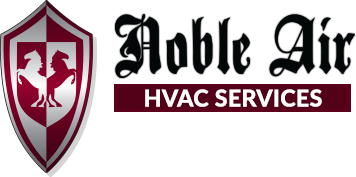During the dog days of summer, temperatures rise significantly, enough to make practically any indoor space warm, or, downright uncomfortable. While you and your employees work away throughout the day, the cooling system goes into overdrive. This, not to mention the fact, outside contaminants continually filter inside. It’s not just the heat the system is combating, but also, dust and debris particles, which must be effectively filtered out to keep the unit functioning properly.
Taking Control of Your Office Air Comfort
It’s a well known fact that in your business, some places are just warmer than other, while still others are noticeably cooler. Then, there are a few “sweet spots,” where the temperature is just right, seemingly all the time. This inefficiency is not only causing sporadic comfort zones, but also, is costing your business a substantial amount of money. All that work, under performing in one place while over cooling in another, is adding to your monthly overhead, and, it isn’t cheap.
Hear that? It’s the sound of your air conditioner running and the sound of your bank account drying up. Heating and air conditioning your [office] take a 43 percent bite from your monthly utility bill, according to the U.S. Department of Energy. Here’s how to reduce those costs in summer. —Bankrate.com
What’s more, there is a direct correlation between indoor temperature levels, personnel comfort, and, productivity. We all have different tolerances for heat and cold, some are more sensitive than others. It’s something that Alan Hedge, an ergonomics professor at Cornell University, has studied, and found that when team members feel warm or cold, their productivity ultimately decreases. Conversely, those who are comfortable deliver higher productivity. In fact, those who are cold, tend to make more mistakes.
If your office is experiencing such disparities, there’s no reason to despair, it’s likely due to one of four common reasons. The good news is, these are generally simple to fix, and, will help your HVAC system perform better for some time to come. Here’s what might be causing the problem:
- Dirt, grime, and internal blockages. Marketing by manufacturers has led the public to believe that air filters are all about making indoor air quality better — that’s sort of true in a roundabout sense. Filters are designed to keep harmful debris out of the system, so the unit can perform optimally. If there is significant blockage, the system must work harder to perform. Fixing these will make a difference in efficiency and operation.
- Space changes within the commercial environment. Built-ins, tall filing cabinets, floor to ceiling partitions. All of these are common in commercial spaces, especially office environments. These can either block or redirect airflow, cutting down on its efficiency.
- Poor air delivery and/or return flow. Here again, blockages could be the culprit. When the return air ducts do not funnel an adequate amount of air back into the system, it becomes unbalanced, and that will inevitably cause harm.
- Worn parts on the unit. If the system hasn’t been regularly maintained or left to run without any checks, it could very well be suffering from worn or broken parts.

